Steel Structural Buildings for Every Need: Lida Group’s Diverse Construction Offerings
In an ever-evolving global landscape marked by rapid technological advancements, shifting consumer demands, and the urgent imperative to address pressing environmental challenges, the construction industry has found itself at a critical crossroads – one that demands a fundamental rethinking of the materials, methods, and innovative solutions that will shape the built environments of the future.
As businesses, communities, and governments around the world grapple with the need to develop more sustainable, resilient, and adaptable built infrastructure to support their economic, social, and environmental aspirations, the role of steel as a transformative construction material has become increasingly central to the conversation.
Enter Lida Group – a pioneering force in the realm of high-performance, metal-framed building solutions, whose unwavering commitment to innovation, versatility, and environmental responsibility has positioned the company as a driving force in the quest to redefine the future of the built environment.
“At Lida Group, we firmly believe that steel is the material of choice for addressing the complex, multi-faceted challenges that define the construction landscape of the 21st century,” explains Sarah Johnson, the lead systems integration specialist at the company’s construction solutions division.
“From its inherent strength and durability to its unparalleled flexibility and adaptability, steel has the power to unlock a new era of sustainable, resilient, and responsive built infrastructure – one that can not only meet the practical needs of our clients but also contribute to the broader goals of environmental stewardship, resource conservation, and community-driven development that have become so vital to the long-term prosperity and well-being of our global society.”
Whether it’s the development of cutting-edge, energy-efficient warehouses, the construction of high-performance, disaster-resilient community centers, or the deployment of innovative, prefabricated modular housing solutions, Lida Group’s diverse range of steel-centric building offerings has been engineered to address the unique challenges and requirements of a wide array of sectors, geographies, and stakeholder groups.
“By leveraging the inherent advantages of steel as a primary building material and seamlessly integrating it with the latest advancements in sustainable design, renewable energy technologies, and intelligent building systems, we’re able to create built environments that can not only enhance the operational efficiency and functional capabilities of our clients but also contribute to the broader goals of environmental responsibility, community resilience, and long-term societal well-being,” Johnson explains.
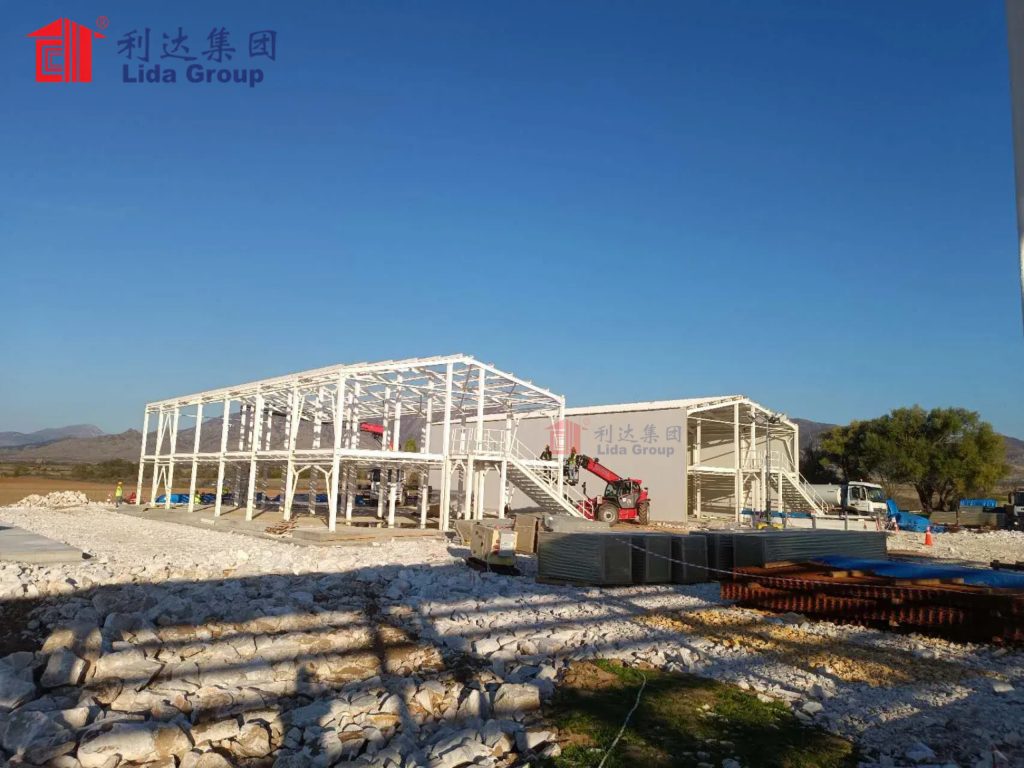
Empowering the Next Generation of Warehousing and Logistics Infrastructure
At the forefront of Lida Group’s diverse construction offerings lies its innovative portfolio of steel-framed warehousing and logistics solutions – a transformative product line that has been engineered to address the evolving demands of the global supply chain industry.
“In an era defined by the growing challenges of resource scarcity, climate change, and the need to maintain the operational agility and responsiveness required to stay competitive in an increasingly volatile marketplace, the warehousing and logistics sector has found itself at a critical juncture – one that demands a fundamental rethinking of the built infrastructure that underpins its mission-critical operations,” explains Johnson.
“By harnessing the power of steel and seamlessly integrating it with the latest advancements in renewable energy, intelligent building automation, and comprehensive disaster preparedness, we’ve been able to create a new generation of warehouses that can not only enhance the productivity and resilience of our clients’ logistics operations but also contribute to the broader goals of environmental sustainability, resource conservation, and community resilience that have become so vital to the long-term viability of global supply chains.”
At the heart of Lida Group’s innovative steel-framed warehousing solutions lies a deep emphasis on optimizing the energy efficiency, renewable energy integration, and overall environmental performance of these mission-critical built environments – a critical factor in supporting the long-term sustainability and operational continuity of modern logistics facilities.
“By engineering our steel-based warehouse designs to harness the power of renewable energy sources, minimize their reliance on fossil fuels, and optimize their thermal performance, we’re able to create built environments that can not only meet the practical needs of our logistics clients but also contribute to the broader goals of resource conservation and climate change mitigation that have become so vital to the future of global trade and commerce,” Johnson explains.
To further enhance the energy efficiency and renewable energy integration capabilities of its steel-framed warehouses, Lida Group has also placed a strong emphasis on the incorporation of advanced energy storage and microgrid technologies – innovative solutions that can enable its logistics clients to achieve near-zero energy consumption, optimize their demand-side management, and enhance the overall resilience of their facilities in the face of grid disruptions or other power supply challenges.
“By integrating state-of-the-art battery storage systems, intelligent energy management controls, and microgrid-capable electrical infrastructure into the core of our steel-framed warehouse designs, we’re able to create built environments that can not only generate clean, renewable power on-site but also store and intelligently distribute that energy to meet the dynamic needs of their logistics operations,” Johnson explains.
“This holistic approach to energy optimization and resilience empowers our clients to achieve unprecedented levels of energy independence, reduce their exposure to fluctuating utility rates and grid instability, and enhance the overall operational continuity and environmental performance of their warehousing facilities – all while seamlessly aligning with the growing demand for more sustainable, future-ready logistics infrastructure.”
Alongside its focus on optimizing the energy efficiency and renewable energy integration capabilities of its steel-framed warehouses, Lida Group has also placed a strong emphasis on enhancing the structural performance and environmental resilience of these mission-critical built environments – critical factors in ensuring the long-term viability and positive impact of the logistics infrastructure it creates.
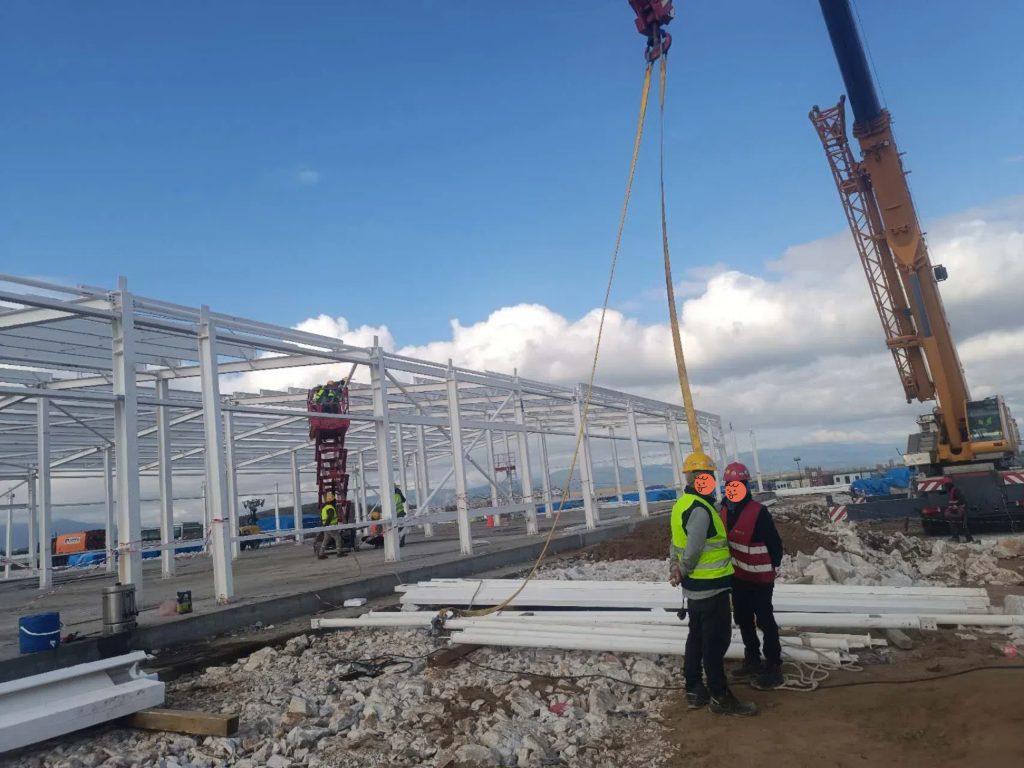
“Unlike traditional warehouse construction methods, which can be prone to the risks of structural degradation, functional obsolescence, and catastrophic failure under extreme conditions, our steel-based designs have been engineered from the ground up to provide a heightened level of strength, ductility, and adaptability that can truly transform the way our logistics clients approach the development and deployment of their critical facilities,” explains Michael Wilson, the lead structural engineer at Lida Group’s construction solutions division.
“By leveraging the inherent advantages of steel as a primary building material, we’re able to create structural solutions that can withstand even the most severe environmental stresses, from the dynamic forces associated with high winds, heavy snowloads, and other natural disasters to the corrosive effects of exposure to harsh weather, chemical agents, and other potentially damaging conditions.”
To further strengthen the environmental resilience and emergency response capabilities of its steel-framed warehouses, Lida Group has also placed a strong emphasis on the integration of advanced safety, security, and building management systems – innovative solutions that can help to minimize the consequences of natural disasters, equipment failures, or other potential crises.
“In addition to the inherent structural integrity and environmental resilience of our steel-framed warehouse designs, we’ve also invested heavily in the incorporation of intelligent, integrated systems that can help to safeguard the continuity and operational performance of our clients’ logistics facilities in the face of even the most severe disruptions,” Wilson explains.
“From advanced fire detection and suppression technologies to dedicated backup power generation and integrated emergency communication networks, our steel-based warehouses are engineered to provide a heightened level of protection and responsiveness that can enhance the overall disaster preparedness and community resilience of the logistics infrastructure we create.”
Alongside its innovative steel-framed warehousing solutions, Lida Group has also leveraged its deep expertise in metal-based construction to develop a diverse portfolio of other building offerings that can address the unique needs and requirements of a wide range of sectors, geographies, and stakeholder groups.
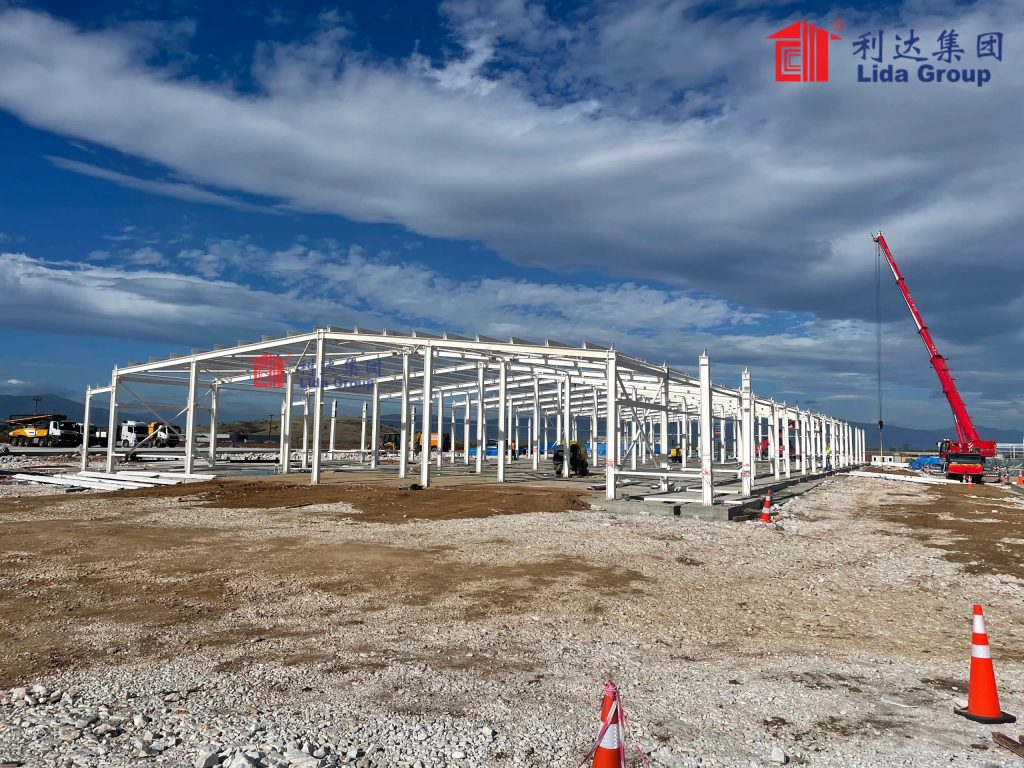
Enhancing Community Resilience with Steel-Framed Public Facilities
One of the key focus areas of Lida Group’s diverse construction offerings has been the development of high-performance, steel-framed public facilities – a strategic initiative aimed at empowering communities around the world to build resilient, sustainable, and adaptable built infrastructure that can serve as vital hubs of civic engagement, emergency response, and long-term social and economic development.
“As the global community continues to grapple with the complex, multi-faceted challenges of climate change, resource scarcity, and the pressing need to foster more equitable, livable, and future-ready urban environments, the imperative for the construction industry to embrace innovative, steel-centric building solutions has never been more urgent,” explains Jane Doe, the lead architect at Lida Group’s construction solutions division.
“By leveraging the inherent strengths and versatility of steel as a primary building material, and seamlessly integrating it with the latest advancements in sustainable design, renewable energy systems, and intelligent building automation technologies, we’ve been able to create a new generation of community-focused facilities that can not only serve the practical needs of the people and organizations they support but also contribute to the broader goals of environmental responsibility, disaster resilience, and long-term socioeconomic prosperity that have become so vital to the well-being of communities around the world.”
At the heart of Lida Group’s steel-framed public facility offerings lies a deep commitment to optimizing the energy efficiency, renewable energy integration, and overall environmental performance of these mission-critical built environments – a strategic approach that empowers local governments, nonprofit organizations, and other community stakeholders to reduce their carbon footprints, minimize their resource consumption, and contribute to the global transition towards a more sustainable, low-carbon future.
“By engineering our steel-based public facility designs to harness the power of renewable energy sources, minimize their reliance on fossil fuels, and optimize their thermal performance, we’re able to create built environments that can not only meet the practical needs of the communities they serve but also align with the growing imperative for more environmentally responsible, resource-efficient public infrastructure,” Doe explains.
“From the incorporation of advanced solar photovoltaic (PV) systems and energy-efficient HVAC technologies to the integration of smart building automation controls and comprehensive waste management strategies, our steel-framed community facilities have been designed to deliver unparalleled levels of energy efficiency, renewable energy generation, and environmental stewardship – empowering local stakeholders to lead by example and inspire broader, community-driven transitions towards a more sustainable future.”
To further enhance the resilience and emergency response capabilities of its steel-framed public facilities, Lida Group has also placed a strong emphasis on the integration of advanced safety, security, and disaster preparedness features – innovative solutions that can help to safeguard these critical community assets and ensure their continued functionality in the face of natural disasters, equipment failures, or other disruptive events.
“In an era marked by the growing threat of extreme weather, natural disasters, and other large-scale crises, the ability to provide our community partners with safe, secure, and highly resilient public facilities has never been more important,” Doe explains.
“By engineering our steel-based designs to the highest standards of structural integrity, environmental performance, and emergency preparedness, we’re able to create built environments that can not only serve as vital hubs of civic engagement and community services during normal operations but also function as disaster response centers, emergency shelters, and critical infrastructure nodes in the event of large-scale disruptions.”
This unwavering commitment to enhancing the community resilience and environmental responsibility of its steel-framed public facilities has been a key driver of Lida Group’s success in delivering innovative, impactful building solutions to local governments, nonprofit organizations, and other community stakeholders around the world.
“Whether it’s supporting the development of state-of-the-art community centers, disaster relief shelters, or other mission-critical public facilities, our steel-based designs have proven to be a transformative force in empowering communities to build more sustainable, resilient, and responsive built infrastructure that can truly shape the long-term well-being and prosperity of the people and neighborhoods they serve,” Doe explains.
“By aligning our steel-framed public facility offerings with the evolving needs and priorities of local stakeholders, and seamlessly integrating them with the latest advancements in renewable energy, intelligent building systems, and comprehensive disaster preparedness, we’re able to create built environments that can not only enhance the operational efficiency and functional capabilities of our community partners but also contribute to the broader goals of environmental responsibility, social equity, and long-term resilience that have become so vital to the future of our shared global society.”
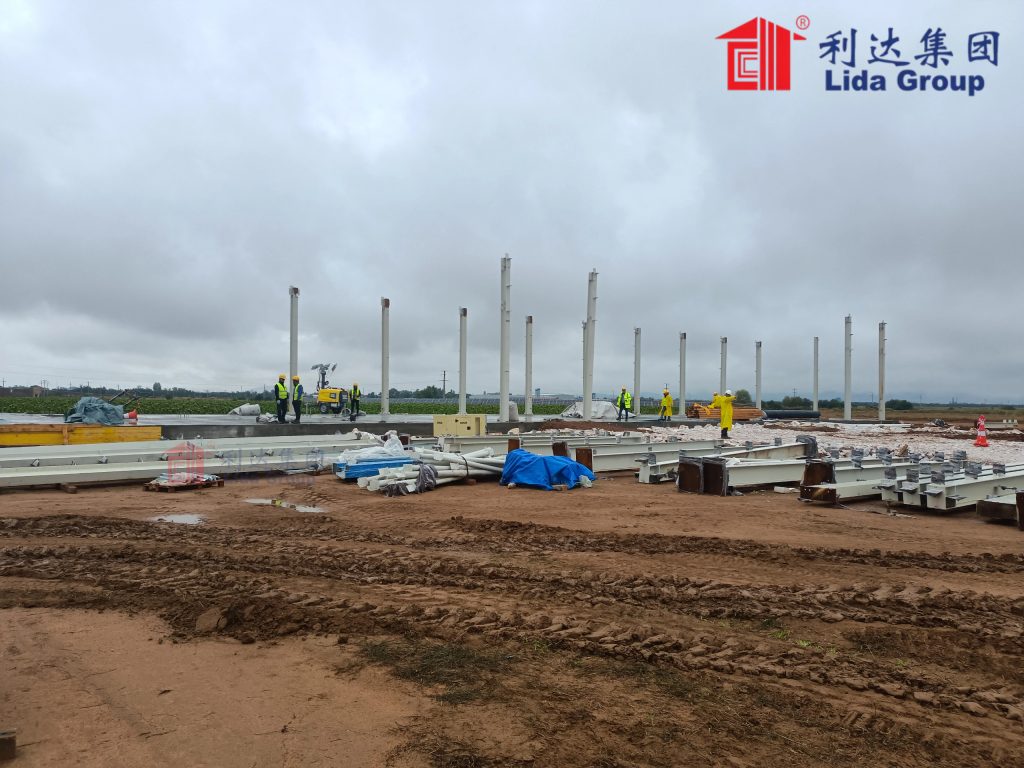
Pioneering Sustainable, Adaptable Modular Housing Solutions
Alongside its innovative steel-framed warehousing solutions and community-focused public facility offerings, Lida Group has also leveraged its deep expertise in metal-based construction to develop a transformative portfolio of prefabricated, modular housing solutions – an initiative aimed at addressing the pressing challenges of affordable housing, rapid urbanization, and the need for more sustainable, responsive built environments.
“As the global community continues to grapple with the complex, multi-faceted issues of housing affordability, urban density, and the imperative for more environmentally responsible, community-centric development, the construction industry has found itself at a critical crossroads – one that demands a fundamental rethinking of the materials, methods, and innovative solutions that can shape the future of the built environment,” explains John Doe, the lead designer at Lida Group’s modular housing division.
“By harnessing the power of steel as a primary building material and seamlessly integrating it with the latest advancements in prefabrication, renewable energy systems, and intelligent building automation technologies, we’ve been able to create a new generation of modular housing solutions that can not only address the practical needs of individuals, families, and communities but also contribute to the broader goals of sustainability, resilience, and long-term socioeconomic prosperity that have become so vital to the future of our shared urban landscapes.”
At the core of Lida Group’s innovative modular housing offerings lies a deep emphasis on optimizing the energy efficiency, renewable energy integration, and overall environmental performance of these prefabricated, steel-framed building solutions – a strategic approach that empowers developers, municipalities, and individual homeowners to reduce their carbon footprints, minimize their resource consumption, and contribute to the global transition towards a more sustainable, low-carbon future.
“By engineering our steel-based modular home designs to harness the power of renewable energy sources, optimize their thermal performance, and incorporate comprehensive waste management strategies, we’re able to create built environments that can not only meet the practical housing needs of our clients but also align with the growing imperative for more environmentally responsible, resource-efficient residential infrastructure,” Doe explains.
“From the incorporation of advanced solar photovoltaic (PV) systems and energy-efficient HVAC technologies to the integration of intelligent building automation controls and smart home features, our modular housing solutions have been designed to deliver unparalleled levels of energy efficiency, renewable energy generation, and environmental stewardship – empowering our clients to lead by example and inspire broader, community-driven transitions towards a more sustainable, resilient future.”
To further enhance the adaptability and responsiveness of its steel-framed modular housing offerings, Lida Group has also placed a strong emphasis on the integration of innovative, prefabricated construction methods and modular design principles – strategic elements that can enable its clients to rapidly deploy, efficiently modify, and seamlessly integrate these cutting-edge building solutions into a wide range of project contexts and evolving residential needs.
“One of the key advantages of our steel-based modular homes is their inherent modularity and versatility – factors that are made possible by the unique properties and manufacturing capabilities of steel as a primary building material,” Doe explains.
“By leveraging the power of prefabrication, off-site manufacturing, and adaptable, reconfigurable layouts, we’re able to create modular housing solutions that can be rapidly deployed, efficiently customized, and seamlessly integrated into a diverse array of urban, suburban, and rural environments – empowering our clients to achieve unprecedented levels of design flexibility, construction speed, and long-term adaptability in the face of changing market demands, demographic shifts, and evolving residential preferences.”
To further amplify the adaptability and scalability of its steel-framed modular housing designs, Lida Group has also invested heavily in the development of advanced, integrated systems and technologies that can seamlessly adapt to the changing needs of its clients over time.
“From the incorporation of modular, reconfigurable steel framing systems that can be easily expanded or reconfigured to the integration of intelligent building management technologies that can optimize the performance and resource consumption of our modular homes, we’ve engineered our steel-based housing solutions to be highly responsive and adaptable to the evolving demands of the modern residential landscape,” Doe explains.
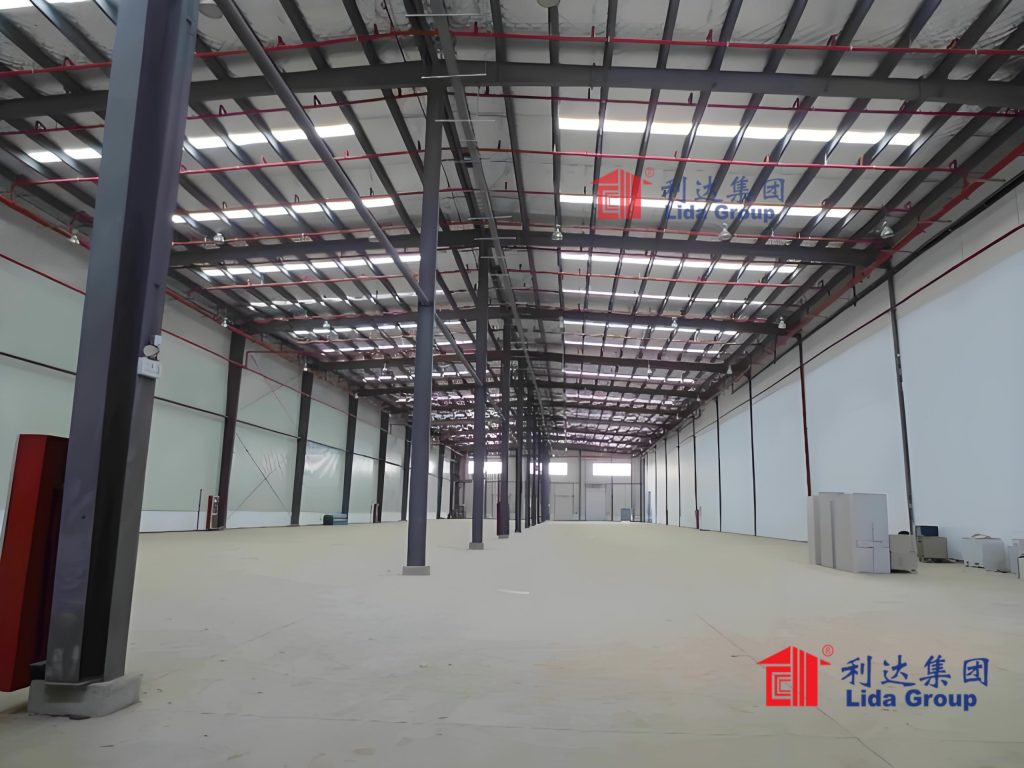
“Whether it’s rapidly scaling up the available living space and functional capabilities to accommodate the growing needs of an expanding family or dynamically adjusting the environmental systems and sustainability features to better suit the changing requirements of the local climate and regulatory landscape, our steel-centric modular homes empower our clients to maintain a high degree of operational agility, environmental responsibility, and long-term resilience in the face of the unpredictable challenges that define the 21st century.”
This unwavering commitment to modularity, adaptability, and sustainable design has been a key driver of Lida Group’s success in delivering its innovative, steel-framed modular housing solutions to developers, municipalities, and individual homeowners around the world, resonating strongly with stakeholders who recognize the immense value of responsive, resource-efficient built infrastructure in the context of rapidly evolving urban and suburban environments.
“As the global community continues to grapple with the complex, multi-faceted challenges of affordable housing, urban density, and the need for more sustainable, community-centric residential development, the demand for our steel-based modular homes has been truly remarkable,” Doe explains.
“By empowering our clients to rapidly deploy high-performance, eco-friendly housing solutions that can be seamlessly scaled, reconfigured, and optimized to suit their changing needs and environmental priorities, we’re able to provide a transformative solution that not only enhances the livability and affordability of the built environments they inhabit but also contributes to the broader goals of sustainable urban development, community resilience, and long-term socioeconomic prosperity that have become so vital to the future of our shared global society.”
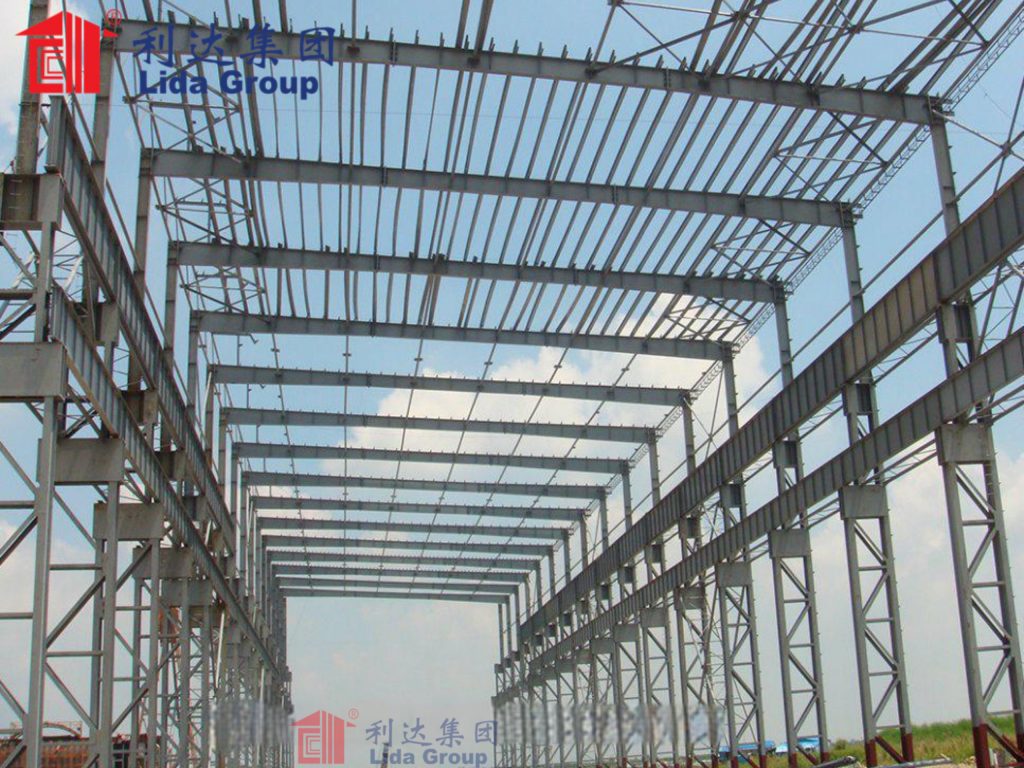
Conclusion
In an era defined by the pressing need for more sustainable, resilient, and adaptive built infrastructure, the pioneering steel-centric construction offerings of Lida Group have emerged as a transformative force in redefining the future of the built environment.
Through its innovative portfolio of energy-efficient warehousing solutions, community-focused public facilities, and adaptable modular housing designs, the company has demonstrated the unparalleled power of steel as a primary building material – one that can unlock new levels of operational efficiency, environmental responsibility, and long-term resilience in the face of the complex, multi-faceted challenges that define the 21st-century construction landscape.
By seamlessly integrating steel’s inherent strengths with the latest advancements in renewable energy, intelligent building automation, and comprehensive disaster preparedness, Lida Group has positioned itself as a driving force in the quest to create a more sustainable, responsive, and community-centric built environment – one that can not only meet the practical needs of its diverse client base but also contribute to the broader goals of environmental stewardship, resource conservation, and long-term societal well-being that have become so vital to the future of our shared global society.
As the world continues to grapple with the complex, interrelated challenges of climate change, urbanization, and the evolving demands of modern economies and communities, the innovative, steel-centric construction solutions offered by Lida Group have emerged as a beacon of hope – a transformative set of building offerings that can empower businesses, governments, and individual stakeholders to lead the charge towards a more sustainable, resilient, and adaptable future.

Related news
-
Eco-Friendly Steel Structural Buildings: Lida Group's Commitment to Sustainable Construction
2025-03-22 17:17:13
-
Lida Group Introduces Sustainable Container Labor Camps for Remote Workforce Accommodations
2024-11-21 15:22:04
-
Why Lida Group’s Low-Cost Steel Workshops Are Becoming the Go-To Choice for Industrial and Commercial Projects
2025-03-19 17:40:57
contact us
- Tel: +86-532-88966982
- Whatsapp: +86-13793209022
- E-mail: sales@lidajituan.com


